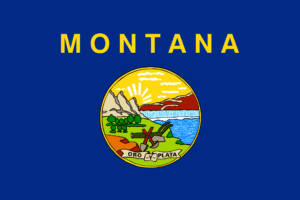The convenience and accessibility of modern technology has made remote work possible and beneficial for employers when hiring out of state employees in Montana. It can also lead to complex employment issues when you hire out-of-state employees. While both employers and employees benefit from flexible working conditions, compliance with employment law, tax, and insurance coverage can cost significant time and money.
Hiring in multiple states allows employers to find the best person for the position—but if you don’t take the time to research Montana employment laws and register in the new state, review state-specific employment standards and understand the legal implications, you could expose your business to hefty fines and penalties. Fortunately, we’ve developed multistate employer solutions that can keep your costs and time commitment low. Read on to learn about the challenges of hiring out of state—and how SixFifty’s employment tools can make the process easier.

Scenario 1: Employee works from home in another state
Before remote work became possible and popular, changing your state usually meant finding a new job. Now workers are free to move elsewhere, allowing them to support aging parents, buy a home in an affordable area and support their partner’s own job moves. However, employers have to make sure that their current policies and procedures comply with the new state’s laws. Researching and ensuring compliance in each new state can be time consuming and expensive.
Scenario 2: Hiring out-of-state employees in Montana
Alternatively, you may wish to hire already out-of-state employees. Remote work makes it possible for employers to expand their talent search, but it also opens companies up to potential liability in the new state. Even if your company is headquartered in North Dakota, Montana employees are governed by Montana state laws. It’s up to each company to ensure that they don’t run afoul of worker protections, tax liability and more.
Multistate Employer Registration Factors to Consider
Failing to comply with Montana’s state-specific standards can create expensive issues for businesses. If you don’t already have an economic nexus in Montana, there’s a certain amount of research and review every employer must perform.
SixFifty has done the hard work for you: we’ve identified five key areas of focus when hiring employees in Montana. Our multistate employer tools are designed to simplify the hiring and registration process, so you can onboard new hires and retain your newly remote workers.
1. Montana Employment Registration
Establishing an economic nexus in Montana is the first step in the hiring process. Within 20 days of hire or rehire, employers need to register to do business in Montana, report the new hire and register or update unemployment and workers’ compensation insurance.
- Obtain a registered agent
- Register to do business in Montana
- Report new hire to the Department of Public Health and Human Services
- Register for unemployment insurance
- Report unemployment insurance account to payroll provider
- Obtain workers’ compensation coverage or update the policy
2. Montana Tax Registration
When hiring Montana employees, employers must register for an income tax withholding account, submit their employer identification number and Secretary of State Identification Number (SOS ID) to the state. Because Montana does not have sales tax, you will not have to register for a sales tax license—unlike most other states.
- Register for income tax withholding account
- Obtain the completed state income tax withholding form from the employee
- Register for a sales tax license or permit
3. Montana Employment Policies
In addition to federally required employment policies, Montana has four additional required policies. These state-specific policies may conflict with your established employment policies—and if you haven’t already addressed the issues in your handbook, you’ll need to add the new policies for your Montana workers.
- Review employee handbook for compliance
- Update policies or add new leave policies as needed
4. Montana Required Employment Policies (2024)
- Business Expense Reimbursement
- Crime Victim Leave
- Leave of Absence to Hold Public Office (Volunteer Civil Service Leave)
- Pay Transparency Policy
- Pregnancy Leave
- Witness Duty Leave
5. Montana Employment Implications
Unlike many states, Montana is not an at-will employment state—employers must have good cause for termination. Employers must comply with the minimum wage requirements, which vary depending on the company’s revenue and where they do business. Finally, employers need to review payroll, overtime, insurance and COVID-19 policies to make sure they’re compliant.
- Ensure non-compete provisions comply with Montana law
- Confirm the employee is paid at least the minimum wage
- Review the applicable overtime laws
- Confirm the payroll practices meet the payment frequency standards in Montana
- Consider whether insurance extends coverage to employees in Montana
- Consider COVID-19 laws that affect the employee
6. Montana Signage
Montana employers are required to post or distribute six types of signage in the workplace. The state has not indicated how to do this for exclusively remote workers. Generally, posting the signage in an easily accessible web folder, on the website or in company communication channels will satisfy this requirement.
- Post or distribute required signage
Simplify Multistate Compliance with SixFifty
The process of maintaining compliance can be complex and extremely nuanced for companies unfamiliar with Montana employment laws and standards. It’s why SixFifty has compiled an extremely useful tool for businesses hiring out-of-state employees in Montana. To simplify the process of hiring out-of-state employees in Montana or supporting remote employees on-the-move, check out our 50 State Hiring Kit.
Looking for requirements for a different state? View our interactive map for hiring out-of-state employee requirements by state.